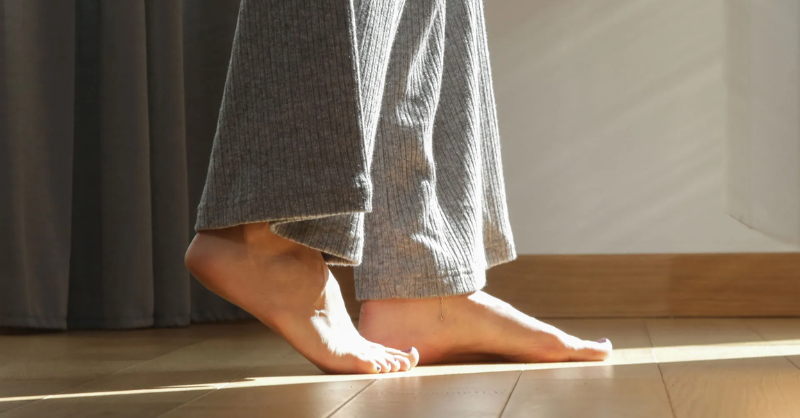
Before you toss your socks aside for good, you might want to consider the potential risks of going barefoot indoors.
While walking around without shoes or socks may feel freeing, health experts have mixed opinions on whether it’s a good idea.
The Case for Bare Feet
Going barefoot, as defined by the Cambridge Dictionary, means walking with no shoes or socks—”skin to ground,” according to clinical podiatrist Dr. Robert Conenello. He explained that even socks count as footwear because they “alter the mechanics of movement,” as reported by BuzzFeed.
Despite this, Conenello is a “big advocate” for walking barefoot, as he believes it “increases intrinsic muscular strength within the feet.” He pointed out that, like other muscles in the body, the muscles in our feet weaken with age, and wearing shoes can accelerate this process. Since these muscles are essential for mobility, he warned that as they deteriorate, our movement may become more limited over time.

“Many of the pathologies that I see in my practice are due to the inability to engage these muscles for normal movements and metabolic efficiency,” Conenello added.
From a dermatological standpoint, Dr. Hannah Kopelman also acknowledged the benefits of going barefoot.
“Walking barefoot at home … allows your skin to breathe, which can help prevent moisture buildup and reduce the risk of fungal infections like athlete’s foot,” she said.
Beyond that, it can provide sensory benefits as well.
“Feeling the texture of different surfaces underfoot can be grounding and relaxing, almost like a mini reflexology session,” Kopelman noted. She added that for those without existing skin or foot conditions, walking barefoot can be a natural way to connect with their environment and encourage mindfulness.

The Potential Risks
However, while ditching socks and shoes has its perks, it’s not entirely risk-free. The impact of walking barefoot depends on how often you do it and where.
Kopelman warned that going shoeless indoors could expose feet to irritants or allergens, including cleaning chemicals, dust, and pet dander. There are also physical hazards like Lego pieces or water spills that could cause injury.
For individuals with sensitive skin, chronic conditions such as eczema or dermatitis, diabetes, or poor circulation, even minor foot injuries could “lead to serious health issues.”
That being said, most risks—aside from stepping on stray objects—can be reduced with proper hygiene.
“Wash your feet frequently, dry them thoroughly, and moisturize,” Conenello advised.
Still, repeatedly walking barefoot on hard surfaces may cause foot fatigue or plantar fasciitis, a painful condition involving inflammation of the arch and heel.

“Over time, the lack of cushioning can put stress on the joints, especially in those who already have foot or joint issues,” Kopelman cautioned.
Conenello also noted that standing barefoot for long periods, such as while cooking, can place “excessive load” on certain parts of the foot, leading to discomfort.
The Role of Socks
Before you swear off socks entirely, consider their protective benefits.
Conenello pointed out that socks act as a “filter” between the foot and hard flooring, reducing direct impact. Meanwhile, Kopelman added that they offer “minimal protection” against abrasions and allergens while still allowing the feet to feel relatively unrestricted.
So, while walking barefoot has its advantages, balancing it with proper foot care and the occasional use of socks may be the best approach.

